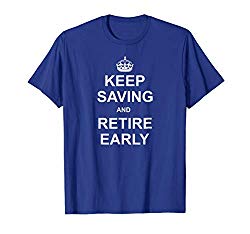Measuring School Achievement In America
 Evaluating school achievement is difficult and time consuming, and a single measurement cannot possibly account for everything that makes up a good school and education. It goes without saying that all public schools in America are not created equal. So what is the best way to measure school performance?
Evaluating school achievement is difficult and time consuming, and a single measurement cannot possibly account for everything that makes up a good school and education. It goes without saying that all public schools in America are not created equal. So what is the best way to measure school performance?
There are “student growth” methods to measure achievement, such as the Gain Score Model and teacher value-added models. You can read about some of those here. And there are other more basic measures such as drop-out rates, transitions rates, and attendance rates.
Being the map nerd that I am, I’m not just interested in data on school performance, I want to see it in a geographic context. And Stanford University has come through for me on that wish.
Stanford University’s Opportunity Explorer is a very slick and detailed interactive map which allows you to explore how school districts and individual schools measure up in educational attainment. Stanford gathered data from over 350 million standardized test scores and mapped them by U.S. school district. Their map shows average test scores in areas as well as school learning rates and trends in test scores.
They actually created the Stanford Education Data Archive (SEDA) which is the first national database of academic performance in the U.S. They describe the SEDA thusly:
The SEDA data are based on the standardized accountability tests in math and English Language Arts (ELA) administered by each state to all public school students in grades 3-8 in each school year from 2008-09 through 2015-16. In these years, 3rd through 8th-graders in U.S. public schools took roughly 350 million standardized math and ELA tests.xbnbv
Digging In
When you open the map you’re presented with a country level view and data divided by school district.

Let me take this moment to commend the fine folks at Stanford for their color choices. It fits into my blog nicely don’t you think? It’s as if they were making this map for me 🙂
When you hover your mouse over a school district you’re presented with a slick pop-up menu showing some basic info for that district about average test scores, socioeconomic status, and how they compare to the U.S. average as a whole.
If you click on a school district a panel will appear on the left showing more detailed data such as the average learning rate and the trend in their scores.
The very cool interactive scatter plot on the lower right reacts live to whatever school district you are hovering over or clicking on. Test scores go from dark green (best) to dark blue (worst) on both the map and the scatter plot. The scatter plot also shows the socioeconomic status of the school district – if the dot is further to the right it is a richer district, while to the left is poorer.
It should come as no surprise that the dots to the right are mostly green, and those to the left are mostly blue.
Here’s the best thing about this map, you can also look at every individual school in America. Simply choose “school” in the upper left where it says “Showing all students by..” and you’ll see this menu.

When you go back to “by county” or “by school district” mode you can see how test scores differ by race, sex, and for poor and non-poor students.
Man, I could go down a rabbit hole exploring this data.
Scatter Plot
If you click on the “Chart” option on the upper right you’ll be presented with a full screen version of the scatter plot.

This allowed me to find the highest scoring and lowest scoring school districts, and individual schools.
The highest scoring district is Lexington District, Massachusetts where students score 3.99 grade levels above the U.S. average.

The lowest scoring district is San Carlos Unified District, Arizona where students score 4.42 grade levels below the U.S. average.

The highest scoring school is Sterling in South Carolina where students score 6.49 grade levels above the U.S. average.

The lowest scoring school is The Centeral School in Delaware where students score 7.76 grade levels below the U.S. average.

School-Based Geoarbitrage
I taught for 16 years as an adjunct professor at a local university, but I’ve never taught kids in public schools. So I’m a bit out of my league in determining what the best measure of elementary school achievement is.
I also realize the issue can get contentious, especially regarding standardized tests.
I did a previous post on the amount of money spent per student versus SAT scores and graduation rates. It’s one of my most read posts ever and I plan to update it with newer data when I get chance.
From a database standpoint, it seems that the SEDA from Stanford is the most comprehensive source to view and measure results from a math and ELA test perspective.
This database is complex, so use the red help button on the upper left of their site if you get confused or want to explore a specific question. If you want to dork-out on the methodology they used in their database, click the Menu button on the upper right and choose “methods”. Warning, it’s not for the math-phobic.
You can also download all of their data by giving them an email address. I did this of course. I know, I’m a dweeb. The data are massive.
Geoarbitrage is a great tactic to get to financial independence. And if you have school aged children, the quality of education in a prospective location is likely one of the major factors you need to look at.
I know there are many parents out there who have deliberately relocated to a different part of the country or a different nearby school district to get their kids in better schools and give them a leg up in life.
If you’re a parent of young children, this database and map are invaluable tools to help with a geoarbitrage strategy based on the quality of schools.
Also be sure to check out my Geoarbitrage Resources Page that has tons of great tools to help you find your perfect location.










































Thanks map nerd ; )
I love the name “Opportunity Explorer”. Having the means and ability to get up and move to seek out opportunity can give people such a leg up on things in so many areas of life. It would be interesting to see other metrics (such as the Medicaid/Welfare metric you shared a few weeks ago) mapped out right on top of this. Seems like so many things follow education, that we would see trends there in some cases.
Max
It is a great name for the project. I also thought of marrying the data up to other data, but it would be a ton of work. I might get to it at some point 🙂
I’m blaming you because my ‘to do’ list will not get done today! This is really fascinating. Needless to say, good thing this wasn’t around when I was growing up….I alone would have dragged my district into a deep dark blue!
Guilty!!
I can dig into, and talk about, school achievement data all day. I didn’t know about the Stanford resource, though! Very cool. One interesting thing about geoarbitrage based on school data is that education data typically tracks really closely with real estate costs. I know, having been part of changes to school attendance boundaries. It’s a highly contentious process and I thought the most protest would come from parents who love the school their children are attending. Instead, it was actually people who were very concerned about impacts to their real estate value. Lots of opportunity with a good data to dig in and find those real opportunities where achievement hasn’t shown up in housing yet.
Very interesting comment and it makes sense that real estate would kind of mirror schools. That gives me another idea to marry up data. Not enough time to do all of this!!!
This is super cool! As a father of 3 children, I constantly worry about the quality of my kids education and if I’m sending them to the right school. Thanks for sharing this awesome resource!
You’re welcome, thanks for reading!
Wow, amazing data Dave! What most strikes me is the correlation of school achievement with your previous post on “money spent per student versus SAT score and graduation rates”. It appears money spent per student (which I suspect also reflect parental average income, race, overall financial stability, and other factors) is the primary indicator of scholastic success. Do you agree or is that an over simplification?
There definitely is some correlation between the Stanford map and my map from the older post for sure. But as you dig into my older post I showed how more money very often didn’t result in better outcomes – but the outcomes were different. I used SAT scores, graduation rate (from high school) and going to college. I used them because I found data for them, plain and simple. In the end I don’t think it’s an oversimplification to say that more money generally gets better outcomes, but personally I don’t think it’s the money itself as much as the fact that the districts/counties that have money also have parents who care more and take an active role in their children’s education. Having grown up in Baltimore City, I saw them throw more and more money at education, and get worse results. Most kids have broken homes, no father, and join gangs. So to me the correlation/causation for money = better results isn’t so straightforward.
Pretty cool you’re able to find data like this. Very interesting stuff.
Having been on the FIRE journey for a while, I do wonder if having a good education is correlated to being able to reach FI and RE. Many people that have good education end up spending more than what they earn. I wish the school system would teach about personal finance. 🙂
I agree Bob, it should be taught in schools. I just don’t see it happening anytime soon.
That’s a great chart. Looks like it’s usually better to live in a richer than average area, but not always.
Our school district is a little above average. I guess I should be happy. Most of OR isn’t doing too well.
Yeah Oregon looked a little rough but the Portland area looks pretty good. And you are correct, more money does not always mean better schools.
i still think it’s hard to go wrong raising kids in much of new england. heck, you can even be rural in vermont and new hampshire and get a good education. i think it’s less of what they do have and more of the absence of some of the problem stuff in other areas.
The nail has been hit on the head… see my reply to Shannon above. Simply throwing money at schools where the kids come from broken homes and gang or crime ridden areas usually does not work. It takes good parents and a good home environment too.